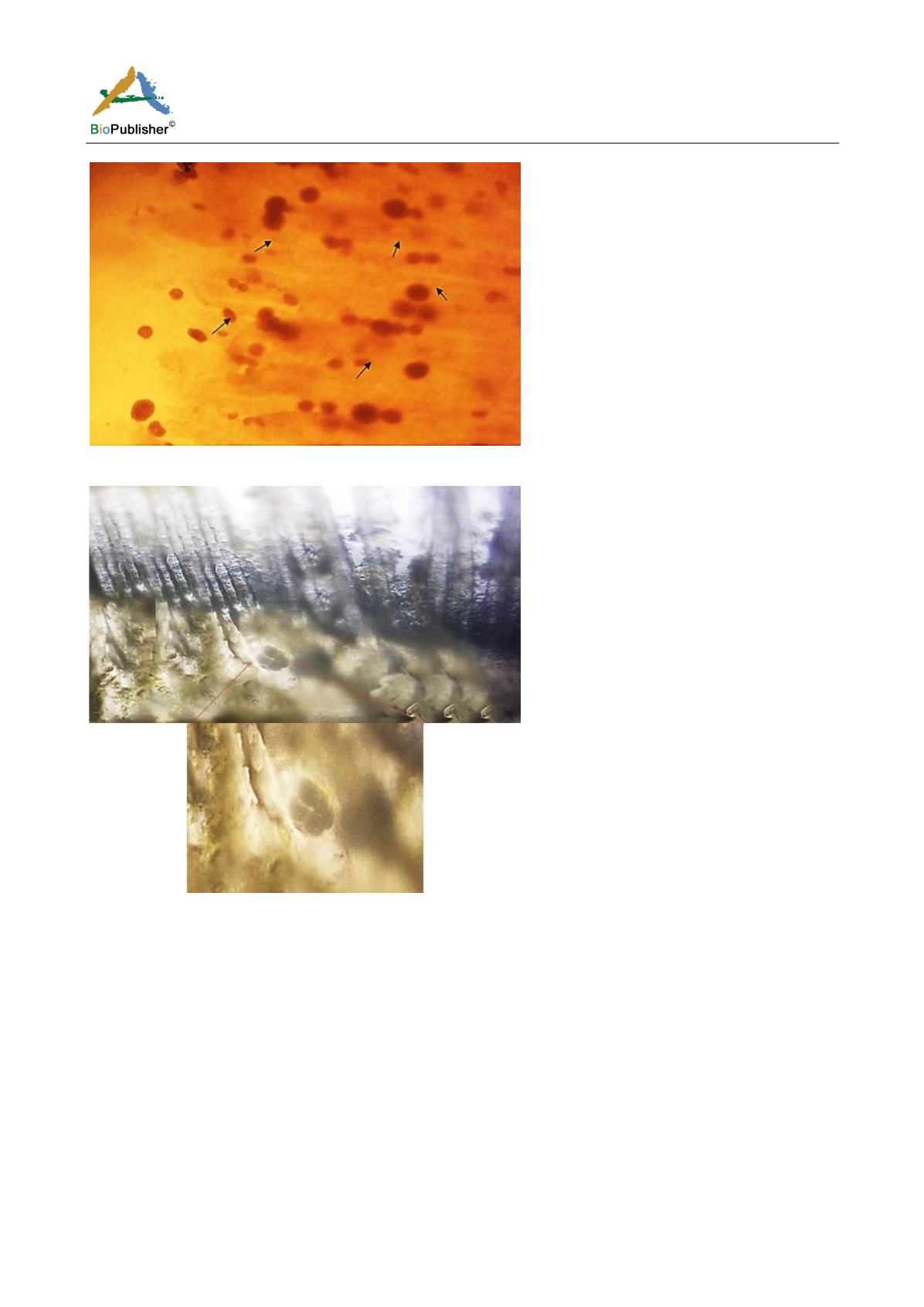
International Journal of Marine Science, 2017, Vol.7, No.24, 229-246
234
Figure 11 Showing fresh mount of gill tissue infested heavily with Amyloodinium ocellatum (trophont and tomont stage first division
(Arrowheads)
Figure 12 Showing fresh mount of gill tissue infested with Amyloodinium ocellatum (advanced stage of division of tomont stage)
2.3 Occurrence of
Amyloodinium ocellatum
infection
In the present study, out of the examined 1065
Dicentrarchus labrax
fish, 618 (58.02%) were found to be infested
with
Amyloodinium ocellatum
. The highest rate of infestation was recorded during spring season with Prevalence
(90.10%) while the lowest was during winter season with Prevalence (30.76%). As shown in Table 2 and Figure
13.
It was necessary to study the Correlation among water quality parameters and
Amyloodinium ocellatum
infestation
during prevalence period: as showed from (Table 3; Figure 14; Figure 15; Figure 16; Figure 17; Figure 18).
There was direct strong significant correlation between pH levels and parasitic infestation (-.457, p=0.043). Also,
there was a significant correlation between Salinity levels and parasitic infestation (473, p= 0.035). There was a
significant correlation between water temperature and parasitic infestation (-0.165, p=0.043). There was a weak
significant correlation between ammonia levels and parasitic infestation (0.057, p=0.488).


